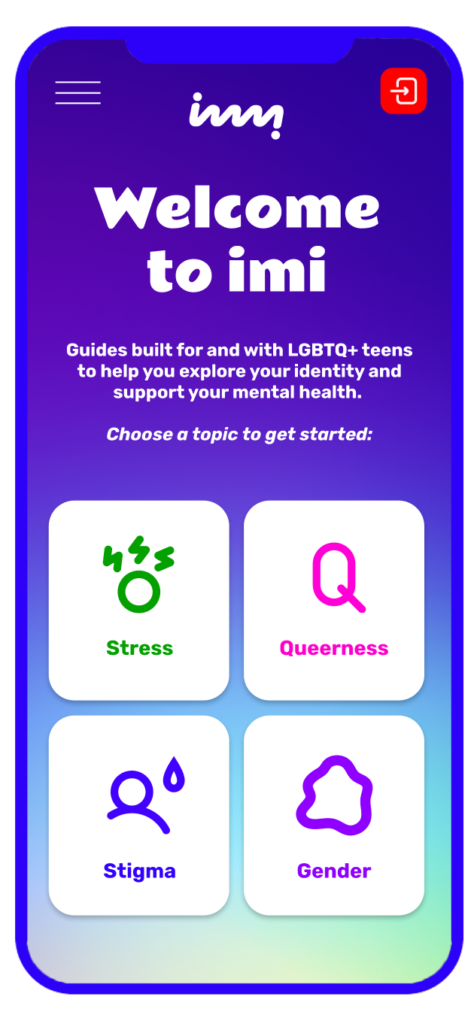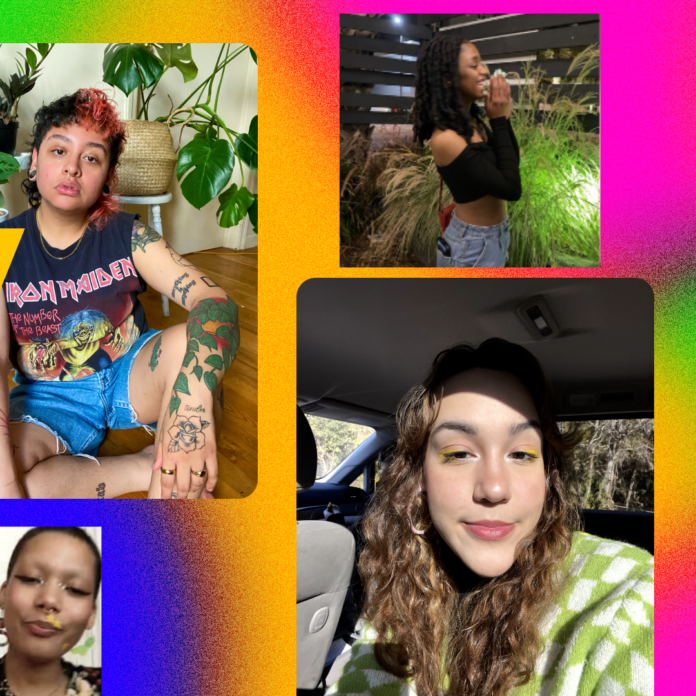When it comes to the mental health of LGBTQ+ youth, resources are not always abundant in places like schools or community centers. That’s where the free, research-based digital mental health tool imi (pronounced eye-me) comes in. Imi was created to help queer and trans youth explore and affirm their identity and engage in practical techniques that increase methods of coping with stress related to sexual orientation and gender.
A collaboration between the social innovation lab Hopelab, the coalition CenterLink, which supports and connects LGBTQ community centers, and the It Gets Better Project, a nonprofit that empowers and connects LGBTQ youth worldwide, imi was designed “with an intentional focus” on BIPOC, trans, nonbinary and gender nonconforming youth.
“Having something made for you, by people like you, is powerful,” Josh Lavra, creative lead at Hopelab and imi co-creator, said in an email. “This is especially true as some adults, many who are not LGBTQ+, make legislation and decisions about the health and well-being of young queer people without their inputs or consent. We created imi to elevate the many intersectional identities youth hold and give them space to see themselves reflected in their peers and dig a little deeper into their own identity.”

Imi consists of four guides of different topics, each containing 10 to 15 subtopics and activities. The Stress Guide, for example, is designed to help an LGBTQ teenager understand societal stressors particular to LGBTQ people and to help them develop coping skills to mitigate those stressors. One of the aspects of the Gender Guide allows youth to hear from and see how some of their peers express their gender, as well as examine their own gender identity and expression. The Stigma Guide allows users to understand and challenge the negative or confusing messages that a person might tell themselves about being LGBTQ+. In the Queerness guide, users can hear from LGBTQ teenagers sharing their intersectional identities and explore their own intersectional identities.
“In every case, we’ve designed imi to be a bit of a ‘choose your own adventure,’” Lavra said. “Not every queer teen is thinking about the same things or asking the same questions. With imi, any young person can drop in and explore the topics that matter most to them and discover more topics to explore later.”
According to the The Trevor Project’s 2022 National Survey on LGBTQ Youth Mental Health, which polled 34,000 LGBTQ youth ranging from 13-24 years old, 45% of LGBTQ youth seriously considered attempting suicide in the last year. The survey also found that LGBTQ youth who experienced high social support from their family reported attempting suicide at less than half the frequency of those who experienced low to moderate social support; less than one third of trans and nonbinary youth thought their home to be affirming of their gender; LGBTQ youth who found their school to be affirming of LGBTQ people reported lower rates of suicide attempts; 60% of LGBTQ youth who wanted mental healthcare in the past year were unable to receive it; and LGBTQ youth who live in LGBTQ-accepting communities reported substantially lower rates of suicide attempts compared to those who don’t live in an accepting community.
A study that Lavra collaborated on with researchers from the University of Pennsylvania revealed that when a young person spends 10 minutes engaging in the content that imi provides, “they can experience greater confidence in their ability to cope with stress and indicate that they have more strategies to deal with stressors,” Lavra said.
As product lead in the development of imi, Lavra’s job was to create an accessible, helpful tool for and with LGBTQ teenagers. They spent two years meeting with LGBTQ youth from across the U.S., whose input helped to shape the attributes of imi.
“This project in particular aligns with my belief that queer people are powerful and resilient and deserve accessible mental health support to deal with the stigma and stress created by society,” Lavra said. “I also, secretly at first, wanted to uplift the stories of young LGBTQ+ people in the hopes that it would provide some hope for someone who might be unsure about their identity or place in society (something I felt when I was in the closet).”


